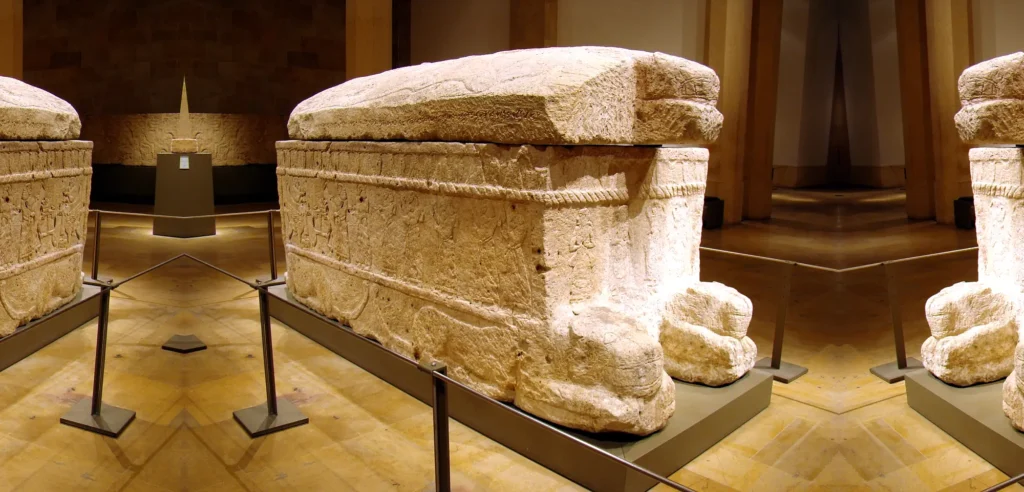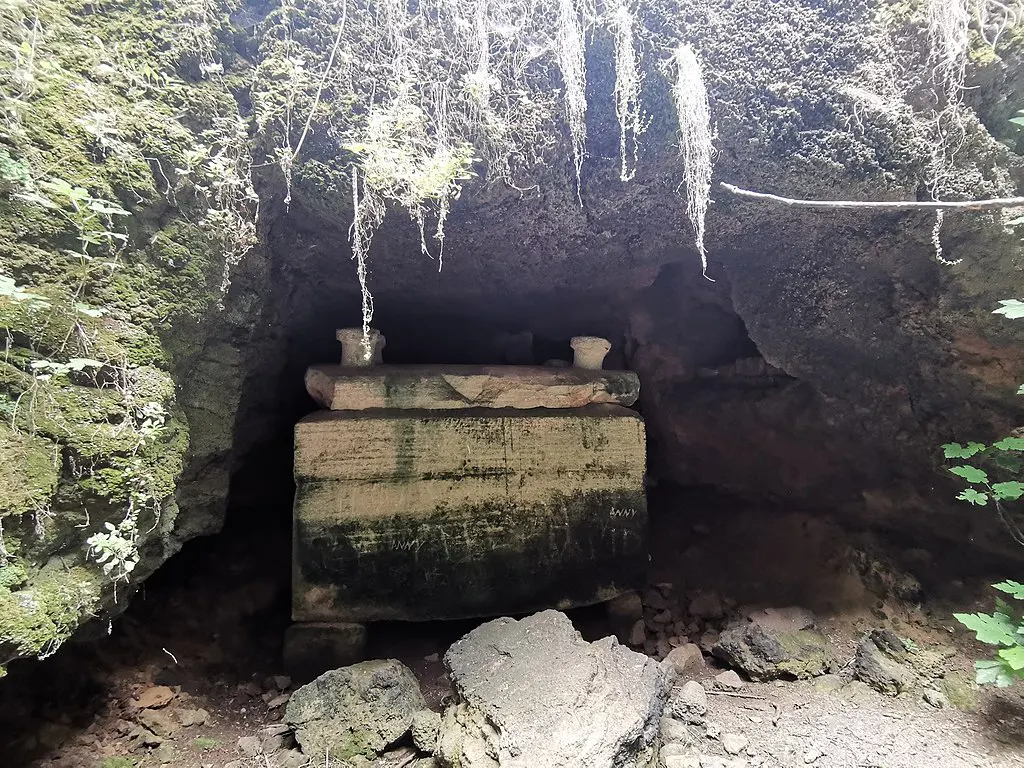It was a stormy night, it sounded like the sky was about to fall, crushing everything in its wake. The earth shook with every thunder strike and the sky lit, highlighting the silhouette of the mighty Crusader castle. This is how it must have felt like on the night of February 16, 1922, in Byblos. To add to the terror, the townspeople were startled awake by the rumbling of tumbling rocks. The city’s outcrop was crumbling like a limp biscuit into the sea. The landslide seemed to go on for hours.
Little did the Giblites know that that night would change the fate of their small, sleepy town forever. Byblos and its past might were about to be rediscovered.
By that time, the coastal cities were still recovering from the ravages of the first world War, the locust blight, and the disastrous Great Famine; divine punishments that reaped an estimated half to a third of the Mutasarrifate of Mount Lebanon and its adjoining cities’ population. The young state of Greater Lebanon was less than two years old, and the people of the Levant had almost completely forgotten their rich bequest.
A magnet for Orientalists
Scientific interest in the history of Lebanon had tickled French imagination since the Napoleonic campaign in Egypt and Syria (1789-1801); the scientific expedition that brought to light the Ancient treasures of the Orient. Other scientific excursions followed, burrowing in the soil, and the history of what was then Ottoman territory.
In 1860, French savant and Semitist Ernest Renan was dispatched to ‘the Lebanon’. Four years later, he published his groundbreaking oeuvre, ‘Mission de Phénicie’. The book was the first and most comprehensive reference that closely examined and described the Phoenician heartland in Lebanon.
Where’s the Lost City
Of particular interest to Renan, who resided for a while in the coastal city of Amchit, was the Ancient city of Gibla/Gubal/Byblos. It seemed to the scholars of the day that the ancient city was swallowed up by the sea. Renan referred to the writings of the ancient Greek historian and geographer Strabo to help him locate Gubal. Strabo’s described Byblos in his account as a large city situated on a hill, some distance away from the sea. This misled Renan and his predecessors, who believed that the ancient city was situated on the hill of Qassouba, a couple of miles away south of Jbeil.
Promontory of the Byblos acropolis. The royal necropolis of Byblos lay at the base of the Roman colonnade.
Renan eliminated that assumption when he examined the hill and judged it too narrow to house a large city of the scale of ancient Byblos. As he looked seaward from the serpentine coastal road to Amchit, Renan must have been impressed by the imposing tower of the Crusader stronghold in Jbeil. On closer inspection, the citadel sat on a beautiful, orchard-covered promontory, smelling of orange blossoms, but also of death. The peninsula that lay south of the medieval city of Jbeil also housed a cemetery and was dotted with but a few charming houses overlooking the infinite, shimmering sapphire waters of the Mediterranean.
Renan was dazzled by the massive, heavily bossed, limestone ashlar blocks of the citadel that seemed to predate the time of the Crusades. The city of Jbeil was also littered with spolia, repurposed ancient building material used in the ramparts and dwellings of Jbeil. All of this was indicative of a much more ancient origin of the city. Renan had two ditches dug in the promontory to explore its underbelly, he was not disappointed. He hit the jackpot, he uncovered ancient stelae and items engraved with Phoenician letters, Egyptian hieroglyphs, and reliefs of Ancient kings, gods, and goddesses. He had found the holiest of the Phoenician cities, the seat of the cult of Astarte, the legendary mother Goddess of Gebal.
Renan’s discovery prompted French scholars to pursue the excavations in Lebanon when France returned in full strength after the fall of the Ottoman Empire.
A nascent science in a young country
During the French Mandate on Lebanon and Syria, High Commissioner Henri Gouraud established the Service of Antiquities in 1920. The service experts prioritized excavations in Jbeil which were officially inaugurated on October 20, 1921, three days after the arrival of Pierre Montet, the French Egyptology professor at the University of Strasbourg to Beirut.
Pierre Montet, a passionate archaeology aficionado, had uncovered a unique Egyptian relief in Jbeil in 1919. He wrote an impassioned letter to the notable archaeologist Charles Simon Clermont-Ganneau who was so fascinated by the report that he resolved to sponsor the excavations of Jbeil.
Piles of backfill and heavy rains…
To facilitate the removal and transportation of the excavation’s rubble, Montet, who was heading the excavation, installed rail tracks for his trolleys across the promontory. The site was closed off to the public, and the rubble was dumped from the cliff directly into the sea. This created a massive backfill at the edge of the site. On the night of February 16, 1922, torrential rains washed the backfill and triggered a landslide in the seaside cliff. Rocks and debris tumbled into the sea, exposing a man-made, rock cut chamber.

Sarcophagus of Abi Chemu in situ in Tomb I at the Byblos royal necropolis. This is the shaft that was uncovered by the landslide.
On February 17 1922, the administrative advisor of Mount-Lebanon informed the Service of Antiquities of the landslide, announcing the discovery of the ancient hypogeum containing a large, unopened sarcophagus. To keep treasure hunters at bay, the perimeter was heavily secured by the Mudir of Jbeil Sheikh Wadih Hobeiche. French epigrapher and archaeologist Charles Virolleaud, who was then the head of the newly created Lebanese service of antiquities, arrived on-site to clear and inventory the contents of the unearthed tomb. Virolleaud continued to supervise the digs and opened the discovered sarcophagus on February 26, 1922. A second tomb (later named Tomb II) was discovered by Montet in October 1923; these discoveries triggered a systematic survey of the surrounding area in autumn 1923. The excavation of ancient Byblos was headed by Montet until 1924; during this period, Montet uncovered eight other tombs, bringing the total number of tombs to nine. Montet was succeeded by Maurice Dunand as of 1925, he continued his predecessor’s work for another forty years.
Golden treasures and ancient kings
To the delight of archeologists, some tomb shafts had never been breached. Looters had only emptied a few tombs, the others delivered a trove of gold jewelry, royal paraphernalia, grand sarcophagi, and most importantly, ancient texts in Egyptian and Phoenician identifying some of Phoenician Gubla’s monarchs.
It took years to excavate the site, more than 260 items were recovered from the Royal Necropolis of Byblos. The most prized of the treasures however was not cast in gold or other precious metals, it was not bejeweled and intricately designed, it was carved from local sandstone: The Sarcophagus of Ahiram.

Pectoral of Ip-shemu-abi at the National Museum of Beirut
Ahiram and his sarcopgahus
Ahiram was a Phoenician king of Byblos in the Late Bronze Age. Scholars disagree as to the exact date of his reign, but it is believed his kingship coincided with the period of the New Kingdom of Egypt (circa 1550BC-1077 BC). Little is known about the king except what we learn from his funerary inscription that ran the length of the sarcophagus front and lid. The Phoenician inscription of 38 words is a curse targeting whomsoever disturbs the king’s resting place.
The importance of the sarcophagus derives from the inscription itself. It is one of five known Byblian royal inscriptions. It is considered to be the earliest known example of the fully developed Phoenician alphabet, and for some scholars it represents the earliest script leading to the transmission of the alphabet to Europe.
The sarcophagus is decorated with lotus flowers, crouching lions serving as the base of the coffin, and scenes representing the king, his son, and their retinue. On the front of the sarcophagus under the inscription, the scene represents Ahiram seated on a throne carved with winged sphinxes. A procession of seven male figures present the seated kings with food and other offerings. The small side of the sarcophagus show women beating their bare chests and heads in mourning. Finally, the back of the sarcophagus shows a procession and men and women bearing offerings.
The sarcophagus of Ahiram is so prized, it is considered the star and a predominant focus at the National Museum of Beirut.
——————
When you’re in Lebanon, pay a visit to the National Museum of Beirut. Check out the Sarcophagus and the Byblian treasures in the Museum’s three floors. It’s open Thursday through Sunday, from 9:00am till 2:pm. Visiting hours have been cut short following the COVID-19 pandemic.
